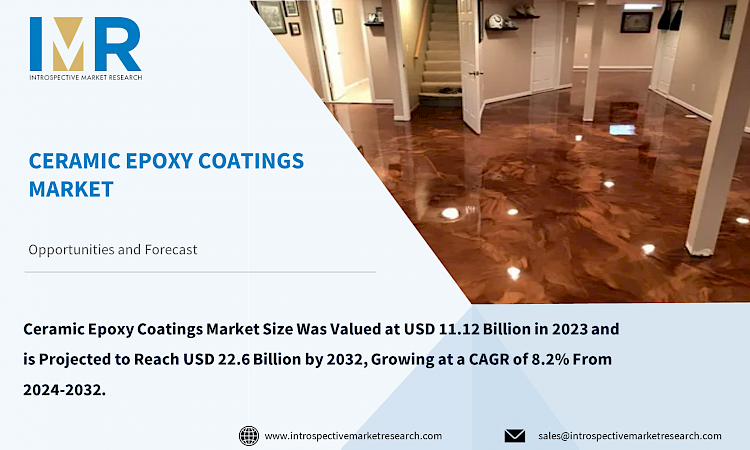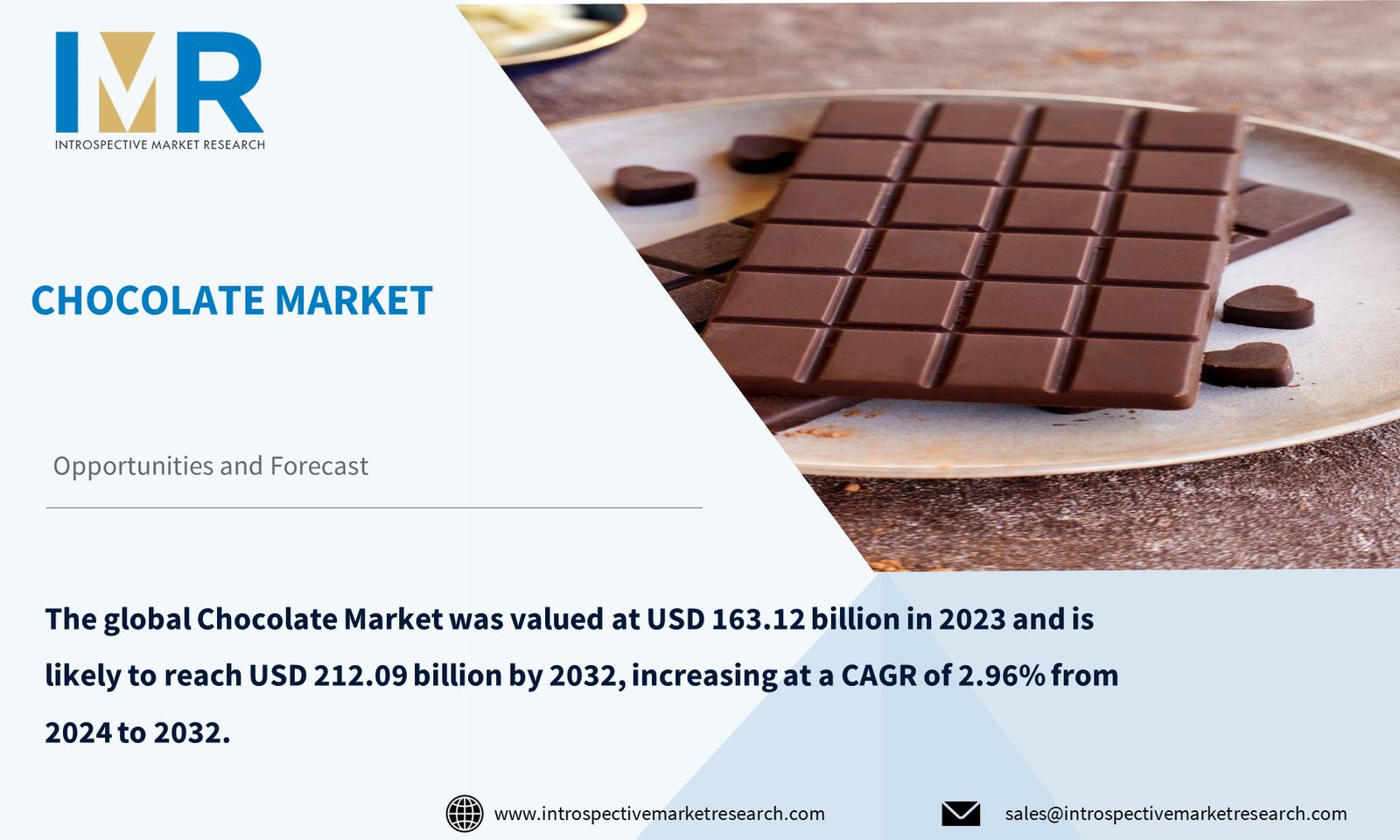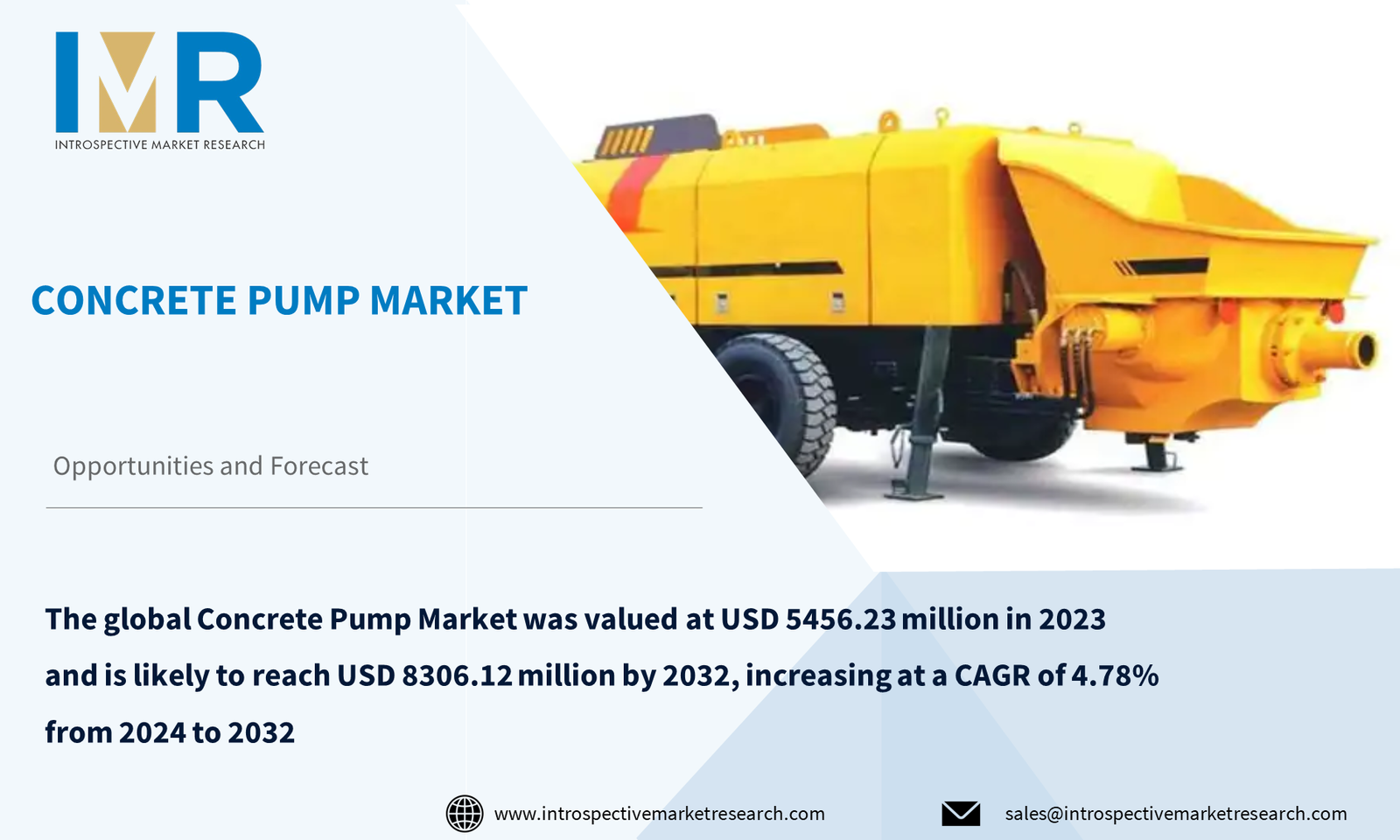Ceramic Epoxy Coatings Market
According to a new report published by Introspective Market Research, titled, “Ceramic Epoxy Coatings Market by Type, end-users: Global Opportunity Analysis and Industry Forecast, 2024–2032,”
the Ceramic Epoxy Coatings Market Size Was Valued at USD 11.12 Billion in 2023 and is Projected to Reach USD 22.6 Billion by 2032, Growing at a CAGR of 8.2% From 2024-2032.
Ceramic epoxy coatings are protective layers consisting of a mixture of epoxy resin and ceramic particles. These coatings offer exceptional durability, corrosion resistance, and high-temperature tolerance. They are commonly used in industrial, automotive, aerospace, and marine industries to protect surfaces against wear, abrasion, chemicals, and the environment. Ceramic epoxy coatings provide a hard and smooth surface that improves the service life and performance of coated substrates in a variety of demanding environments.
Ceramic epoxy coatings offer excellent durability and corrosion resistance, making them highly sought after in industries such as manufacturing, automotive, and aerospace. It helps protect surfaces from wear and tear and is critical to maintaining operational efficiency. It can withstand high temperatures and is ideal for use in extreme heat or thermal cycling. Growing demand for ceramic epoxy coatings due to their versatile uses and excellent performance characteristics. As the industry increasingly prefers cost-effective solutions for long-term asset protection, ceramic epoxy coatings are becoming the preferred choice.
According to the global Ceramic Epoxy Coatings market analysis, the market is divided by application, packaging type, material, and geographical division. By application, it comprises personal care packaging, health care packaging, food & beverage packaging, and others. By packaging type, it includes recycled content packaging, reusable packaging, and degradable packaging. Based on the material, the market is segmented into plastic, metal, glass, and others. By geography, it includes North America, Europe, Asia-Pacific, and LAMEA markets. Further, the report also covers the strategies adopted by key market players to sustain a competitive environment and increase their market share.
Ceramic epoxy coatings are a key part of asset management and operational efficiency and offer several advantages. They increase efficiency and cost savings for businesses by reducing upfront costs and ensuring business continuity. These coatings also extend asset life and improve performance by providing excellent resistance to corrosion, abrasion, chemicals, and extreme temperatures. They offer excellent durability and outperform traditional coatings with properties such as antifouling, heat resistance, and electrical conductivity. It also supports sustainability goals that reduce material consumption, VOC emissions, and energy savings. They promote cost-effectiveness, performance improvement, and durability, emphasizing the critical role of ceramic epoxy coatings.
The priority of environmental and sustainable solutions is increasing in various industries. Ceramic epoxy coatings provide lasting protection while minimizing environmental impact throughout their life cycle. There are many formulations with low levels of volatile organic compounds (VOC), reducing harmful emissions from application and promoting a healthier working environment. Ceramic epoxy coatings facilitate energy conservation by improving equipment performance and reducing downtime. It maintains excellent protection against corrosion, abrasion, and extreme temperatures. These coatings improve active efficiency, which reduces energy consumption and carbon footprint.
Global Ceramic Epoxy Coatings Market, Segmentation
The Ceramic Epoxy Coatings market is segmented based on Type, Application, And End-User and region.
Type:
The type segment is further classified into Solventless and thick Paste. Among these, the Solventless sub-segment accounted for the highest market share in 2023. Solvent-free coatings are increasingly used due to their environmental sustainability, as they contain very few volatile organic compounds (VOCs). Solventless is the perfect choice for industries determined to reduce carbon emissions. Solvent-free coatings offer superior performance characteristics compared to other types. They offer better durability, better chemical resistance, and better adhesion properties. These coatings provide long-term protection against corrosion, abrasion, and harsh environmental conditions, making them ideal for demanding applications in industries such as manufacturing, automotive, aerospace, and infrastructure.
Application:
The Application segment is further classified into Metal, Fabric, and Plastics. Among these, the Commercial sub-segment is anticipated to show the fastest growth by 2032. The metals segment covers a wide range of applications from various industries including manufacturing, automotive, aerospace, and infrastructure. Metals are widely used in these industries due to their structural strength and versatility, making them prime candidates for protective coatings that increase durability and longevity. Ceramic epoxy coatings provide excellent protective properties to protect metals from damage in harsh environments. The dominant position of the metal segment is fueled by the growing demand for preventive maintenance and asset protection strategies in industries. Ceramic epoxy coatings play a crucial role in the service life of metal parts and infrastructure.
Region:
The Ceramic Epoxy Coatings market in Asia Pacific is projected to show the fastest growth by 2032. Rapid industrialization in countries such as China, India, and Southeast Asia, along with increased manufacturing activities and infrastructure projects, has increased the demand for durable and corrosion-resistant coatings. Governments are also investing in infrastructure projects that require high-performance coatings, such as ceramic epoxy, that provide superior wear resistance. Growing environmental awareness is driving industries towards sustainable solutions, where ceramic epoxy's low VOC content and ability to extend asset life are important factors. Regulations emphasizing sustainability continue to encourage the industry to choose environmentally friendly alternatives such as ceramic epoxy. Lower labor costs in the Asia-Pacific region make ceramic epoxy coatings more cost-effective and attract wider adoption. Advances in technology also increase market access for local producers. The increase in disposable income in the automotive, marine, and aviation sectors is increasing the demand for quality products. Government initiatives will promote industrial development and sustainable development, enhancing the growth potential of ceramic epoxy in the region.
Some of The Leading/Active Market Players Are-
- Dow Inc. (USA)
- BASF SE (Germany)
- Sika AG (Switzerland)
- Hempel A/S (Denmark)
- Jotun A/S (Norway)
- The Sherwin-Williams Company (USA)
- RPM International Inc. (USA)
- PPG Industries Inc. (USA)
- Axalta Coating Systems LLC (USA)
- Induron Protective Coatings (USA), and Other Active Players
Key Industry Developments
- In July 2023, BASF Automotive OEM Coatings achieves 100% renewable energy across all China sites, reducing around 19,000 tons of carbon emissions by 2023. Through a blend of Renewable Direct Power Purchase and international renewable energy certificates, BASF advances its net zero commitment and meets sustainability demands in the automotive industry, emphasizing minimized carbon footprint and customer satisfaction.
- In Nov 2023, Induron Protective Coatings announced the launch of its newest product, Novasafe. Novasafe is a furfuryl-modified, thick film, ceramic-filled novolac epoxy and it can stand up to the most extreme environments encountered in treatment plants.
Key Findings of the Study
- The Ceramic Epoxy Coatings market is projected to grow from USD 11.12 billion in 2023 to USD 22.6 billion by 2032, at a CAGR of 8.2% during the forecast period. This growth is driven by increasing demand across industries such as manufacturing, automotive, aerospace, and marine, where these coatings offer exceptional durability and protection against wear, corrosion, and extreme temperatures.
- There is a rising preference for solventless ceramic epoxy coatings due to their low VOC content, promoting environmental sustainability. These coatings contribute to reducing carbon emissions and improving workplace safety while meeting stringent regulatory standards.
- The Asia-Pacific region is expected to exhibit the fastest growth in the Ceramic Epoxy Coatings market by 2032. Rapid industrialization, infrastructure development, and government initiatives in countries like China and India are driving this growth. Lower labor costs and technological advancements further bolster market expansion in the region.
- The coatings find extensive applications in protecting metals, fabrics, and plastics across various sectors. The metal segment, particularly in manufacturing and infrastructure industries, dominates due to the coatings' ability to enhance asset longevity and minimize maintenance costs.







